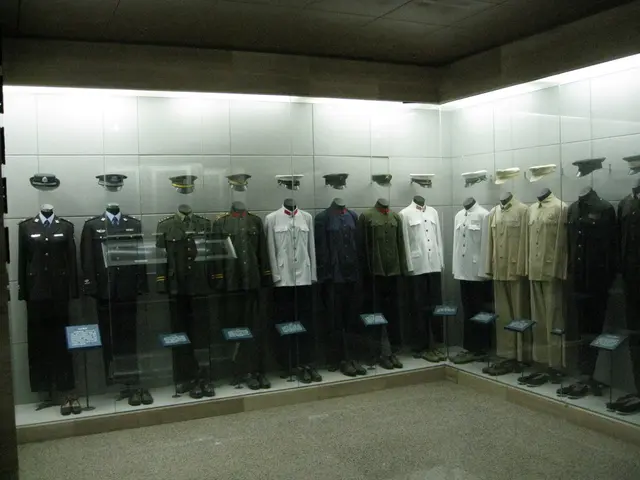Strategies for Integrating Community Involvement in City Planning and Construction
Urban development isn't just about putting up buildings - it's about creating a city that works for everyone, here and now, and in the future. Who better to help shape the city than the people living in it? We caught up with Caren Ohrhallinger from nonconform, an architectural company on a mission to revolutionize the urban development game.
Participation in urban development means having a say in the planning and development of your city, deciding where, how, and why things are built. But it's not just about casting a vote. It's about having a genuine role in shaping the city, having a real impact on what's happening, and being actively involved in the process.
So, what's nonconform all about? Based in Germany and Austria, nonconform starts at phase zero, bringing in the knowledge of the public and local experts from the get-go to create more suitable and accepted results. They call themselves an "office for change," with the belief that the best solutions for urban planning can be found by working with the people affected from the start.
Caren, the Chief Executive in Architecture at nonconform, explains that urban development is like surgery on a living patient, an intrusion into people's living spaces. Often, there's fear and resistance because people don't want to change. But when you involve people from the start and work to create real benefits for the neighborhood and existing residents, people are better able to handle the changes.
In addition to offering traditional architectural services, nonconform works with public commissioning authorities and private clients to help facilitate the process. This includes everything from defining the scope of the task based on the initial enquiry and challenges, to competition, execution, and ensuring continuity and quality throughout the project.
The heart of nonconform's approach is idea workshops, 3-day festivals designed to get things moving and keep people talking. These workshops help extract and filter ideas, understand demands and conflicts, and encourage the exchange of perspectives. By understanding people's needs and preferences, nonconform can suggest the best solution, acting as advocates for the future and ensuring sustainability for the city.
Participation doesn't always look the same. From conscious decision-making to being heard and involved, to just being informed, there are many levels to participation. Whatever the method, Caren emphasizes that the focus should be on exchange and dialogue. Even if you can't engage everyone, those who are involved are more likely to understand and accept the results, even if they're not 100% happy with them.
In some cases, nonconform's flagship 3-day format may not be the best approach. They tailor their processes to suit different needs, combining ideas, demands, and feedback to create concrete concepts. They've even experimented with citizen's councils, allowing representative groups to work together from the start to develop concepts for large-scale projects. For Caren, "participation always works — there is always a participatory approach that is possible; there is just a variety to consider."
When it comes to urban planning, there are some questions better left to the experts. Questions like where to build, how densely to build, and how to create sustainable urban solutions are best discussed publicly. meanwhile, issues like the adaptability and mixed-use of buildings, the functionality of floor plans, and the use of public space depend on specialist knowledge. Caren emphasizes the importance of discussing these questions and their consequences in public forums, pointing out that many individual decisions depend on awareness and connectedness.
Participation can be tricky in certain situations, like developing a new district. While there may be stakeholders with interests, there may be no clear residents to consult. But don't underestimate the power of role-playing. By imagining the needs of future residents, you can get a better sense of what the area could be and how to best cater to those needs.
Digital participation can be a challenge, but it can also be a powerful tool. While some aspects work better in person, most things can be handled digitally, from gathering ideas to collecting feedback. Gamification is one area nonconform is exploring to engage people in digital workshops and ensure everyone feels involved, no matter their location.
There are many obstacles to overcome in urban development, but with the right approach, anything is possible. Caren offers some best practices for including participation in sustainable urban planning:
- Employ a caretaker to oversee the entire process and act as the liaison between the public, municipal authorities, property owners, and stakeholders.
- Don't wait – take action and make something happen. Even small changes can have a big impact.
- Start simple and use humble resources to get the ball rolling.
- Focus on creating visible, open, and observable changes to show the public that something is happening.
- Spin a web of communication to bring people together and utilize connections to improve the process and outcome.
- Create attractions that encourage frequent visitors and generate social interactions to create a vibrant, lively city.
Overall, sustainable city planning means getting everyone involved – citizens, authorities, builders, developers, specialists, and investors. By working together, you can create a city that works for everyone.
- Nonconform, an architectural company, emphasizes the importance of public participation in urban development, believing that the best urban planning solutions can be found by working with the people affected from the beginning.
- In addition to traditional architectural services, nonconform also helps facilitate the urban development process by defining tasks based on initial enquiries, organizing competitions, and ensuring continuity and quality throughout projects.
- Caren, the Chief Executive in Architecture at nonconform, refers to urban development as surgery on a living patient, emphasizing the need for fear and resistance to be addressed through public involvement and the creation of real benefits for the neighborhood and existing residents.
- Caren suggests that participation in sustainable urban planning can involve a variety of methods, including conscious decision-making, being heard and involved, and simply being informed, with the focus being on exchange and dialogue.







